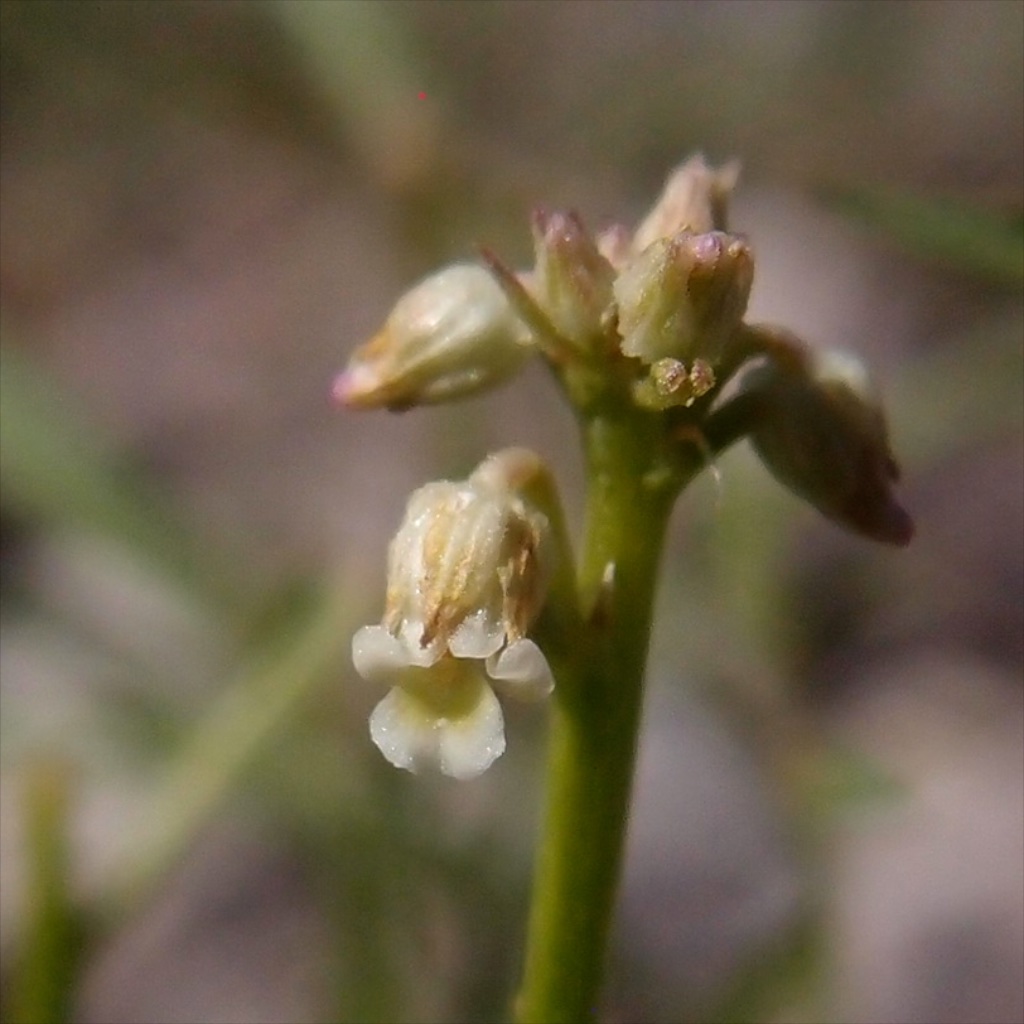
|
Family: Violaceae |
PLANT: Caulescent annuals or subshrubs (in AZ). LEAVES: simple, cauline, stipulate, petiolate or sessile, the lower usually opposite, the upper alternate in ours. INFLORESCENCE: flowers solitary or in axillary clusters of 2‑4; pedicels of ours with distinct abscission joint from which the flower usually bends outward or deflexes downward. FLOWERS: sepals subequal, not auriculate; petals unequal, the lower petal much larger than the others, more or less gibbous on underside, narrowed in middle of blade, the tip wide‑spatulate. FRUITS: globose to ovoid, glabrous; cleistogamous flowers and fruits present in ours. SEEDS: ca. 4‑6, globose to slightly flattened, with a prominent whitish caruncle. NOTES: Ca. 150 spp. primarily of tropical and subtropical areas, N. and S. Amer., Australia, Africa, Asia; 2 spp. in AZ. (Greek: hybos = humpbacked + anthos = flower). REFERENCES: Little, R. John. Violaceae. 2001. J. Ariz. - Nev. Acad. Sci. Volume 33(1). Sep subequal, without auricles; pet small, subequal (in ours), emarginate, recurved at the tip, the lower one wider than the others, gibbous or spurred at base, and more strongly notched at the tip; stamens (in ours) connate into a sheath surrounding the pistil and bearing a bilobed gland at the base; style hooked at the tip; fr a 3-valved capsule; leafy- stemmed perennial herbs (ours) or shrubs with alternate (seldom opposite or even whorled) lvs and inconspicuous, greenish-white fls pedicellate in the axils. (Cubelium) 150, mostly warm reg. Gleason, Henry A. & Cronquist, Arthur J. 1991. Manual of vascular plants of northeastern United States and adjacent Canada. lxxv + 910 pp. ©The New York Botanical Garden. All rights reserved. Used by permission. |
This project was made possible in part by the Institute of Museum and Library Services [MG-70-19-0057-19].
Powered by Symbiota



